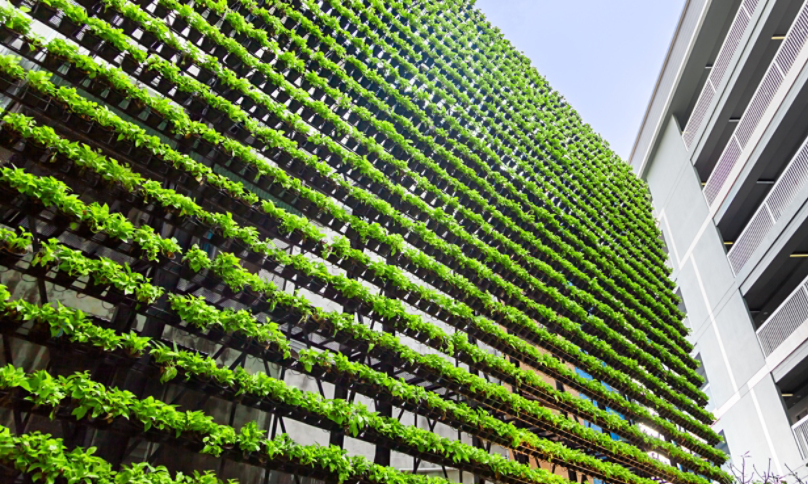
Our EnvironmentArticle
A New Way to Lead in Sustainable Business: Regenerative Impact
September 18, 2023
Catalyzing collective action to generate inclusive growth

Our EnvironmentArticle
September 18, 2023
Catalyzing collective action to generate inclusive growth
We are now in a new reality.
This summer began with dangerously smoky conditions and air quality alerts affecting more than 100 million Americans and Canadians, fueled by hundreds of wildfires blazing across Canada. In June, temperatures in India hovered with devastating effects at a blistering 116 degrees Fahrenheit. An analysis by Climate Central shows that 6.5 billion people, more than 81% of the global population, experienced climate change-attributed heat in July, which was officially Earth’s hottest month ever. And in August, the deadliest wildfire in more than a century burned large portions of the island of Maui, with tragic loss of life and 80% of the beautiful city of Lahaina destroyed.
Scientists are proposing we call this a new epoch, the Anthropocene, the first in the history of our planet to be named for human impact.
The question is, what kind of impact will we make?
We simply cannot afford to become paralyzed by climate anxiety or overwhelmed by the magnitude of our challenge. The interdependency between human and planetary health is more important now than ever before. A new normal is here, and we must take action today for a more resilient and sustainable future.
I’m starting to shift the way I view our work—from sustainability to regenerative impact.
To sustain is to preserve the status quo. Today, our team is thinking not only about how we survive, but how we grow, increase resilience and make a positive impact.
Research firm GlobeScan has tracked corporate sustainability leadership since 1997, from the “Harm Reduction Era,” through the “Strategic Integration Era,” to the “Purpose-driven Era.” Their term for this moment is the “Regenerative Era,” when leadership looks like “catalyzing collective action.” In this new era, GlobeScan advises, it’s about accelerating change and mobilizing our stakeholders to act with us. It’s not about reducing our negative impact; it’s about generating positive impact that builds on itself to create even more positive impact.
Regenerative impact goes beyond reducing our negative impact; it’s about generating positive impact that builds on itself to create even more positive impact.

Regenerative impact is about a new way of doing business, where companies like ours catalyze collective action to make a positive contribution—to the environment, to the economy, to our communities. It’s a new way of thinking about technology, investment, strategy, and people. It exists beyond and outside of our traditional categories of business and sustainability as separate spheres.
The common thread—momentum. Collective action that creates positive impact that generates inclusive growth…and on and on in a virtuous cycle.
The work of Andrew Winston, member of the Trane Technologies Advisory Council on Sustainability, and Paul Polman, former CEO of Unilever, has been influential in our thinking. In their book Net Positive: How Courageous Companies Thrive by Giving More than they Take, Winston and Polman define a net positive company as one that “improves well-being for everyone it impacts and at all scales… even future generations and the planet itself.” The authors concede that we are living through an unprecedented matrix of challenges—and that solving them is “the greatest economic opportunity of our time.”
Our chair and CEO, Dave Regnery, said earlier this year in an interview on Mad Money: “It’s not often you find the incumbent that’s also a disruptor. But that’s who we are.” We’re honest enough to know that the way we have been doing business now requires a shift. And we’re confident enough to know that we will find a new way.
When we think about reducing global emissions, we often think a lot about driving less and reducing our reliance on fossil fuels through the electrification of vehicles. And there is a lot of exciting work being done in this area. But 15% of the world’s annual greenhouse gas emissions actually come from the heating and cooling of homes and buildings (with the bulk from heating). The electrification of heating provides a tangible opportunity to significantly reduce carbon footprints. And the great news is that the technology exists today to address this. We are transforming the way the world creates comfort in buildings and the necessary temperatures for industrial operations—dramatically reducing energy use and other resources along with reducing carbon emissions in the process.
For example, we have long led the industry in using thermal storage for cooling. Now, we are applying the technology in a new way, an industry first. Our ThermalTM Battery Storage-Source Heat Pump System is a first-of-its-kind solution to advance electrified heating in buildings, including in climates below zero-degrees Fahrenheit. This all-electric solution converges three proven technologies to accelerate building decarbonization: thermal energy ice tanks, all-electric chiller-heaters supporting air-to-water heat pumps and intelligent controls. The system brings heating and cooling into one solution, eliminating the need for an oil or gas boiler, and is three times more efficient than traditional heating and cooling methods.
I think for many years the general public saw our work as being about “the environment”—a vague concept that included remote grasslands and endangered species, a “nice to have” after safe communities and good jobs. I think this summer, everyone is beginning to understand that “the environment” is us.
I’m currently at Climate Week NYC, engaging with policy makers, sector leaders, sustainability advocates and environmental NGOs. This gathering has fostered diverse coalitions, inspiring me to transform collective action into tangible, positive impact. I’m determined to promote inclusive growth and perpetuate a cycle of regenerative impact.
Recommended for you
Our Environment Article
The Power of PartnershipOctober 25, 2024
We amplify our impact on issues from global climate action to local community needs through our partnerships.
This article is co-authored by Deidra Parrish Williams, Global Corporate Citizenship Leader, Trane Technologies.
Our Environment Article
Trane Technologies Tackles Embodied Carbon at UNGA Goals HouseOctober 14, 2024
Trane Technologies VP of Sustainability Scott Tew discusses the company’s move to reduce embodied carbon at UNGA Goals House at Climate Week NYC 2024.
Our Environment Article
Leading on Embodied CarbonSeptember 23, 2024
Trane Technologies’ sustainability and procurement leaders on the company’s move to reduce embodied carbon by 40%.
This article is co-authored by Kinnar Ghiya, Vice President, Procurement, Trane Technologies.
Our Environment Article
Building a MovementJune 17, 2024
The technology exists today to decarbonize the built environment. How will we get to net-zero? Together.